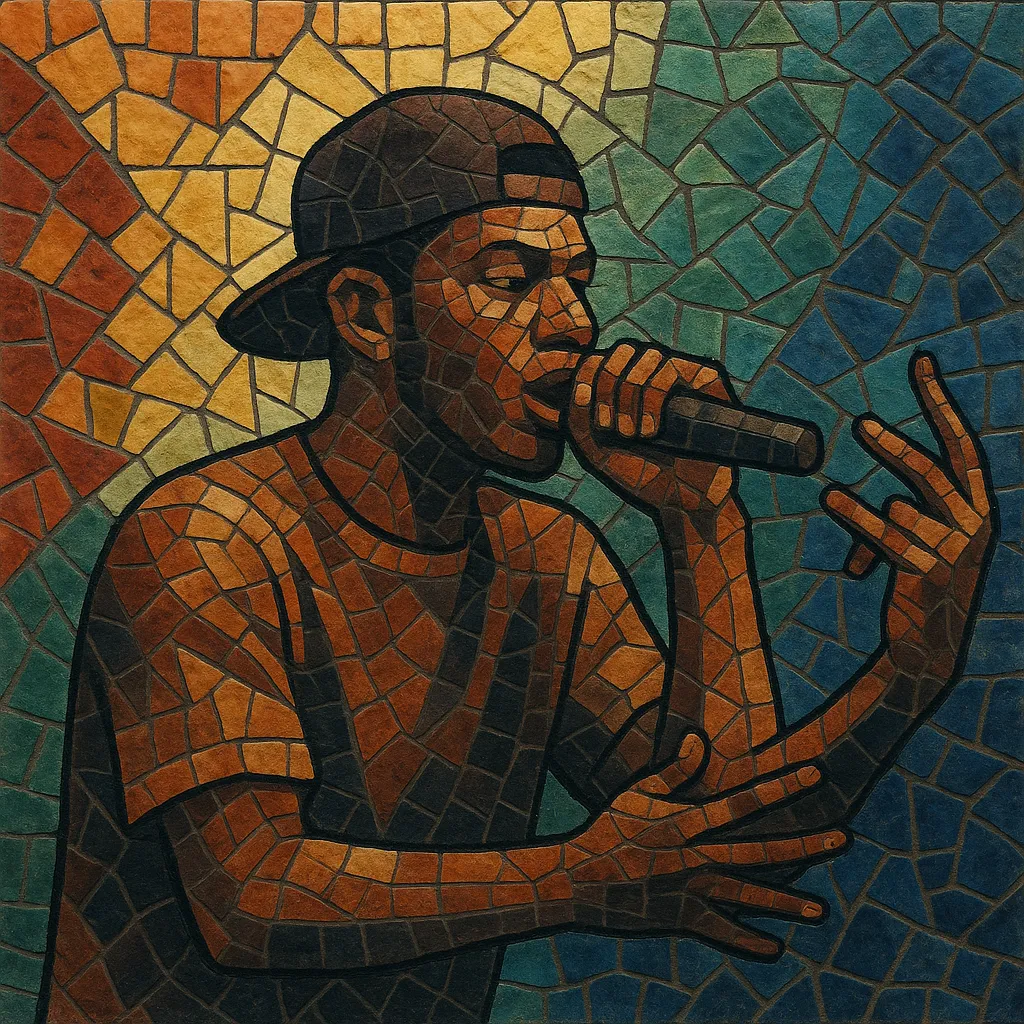Ghanaian hip hop (often called GH hip hop or GH rap) is a Ghana-rooted form of rap that blends the aesthetics of American hip hop with highlife rhythms, Ghanaian percussion timelines, and the country’s multilingual lyricism.
Artists commonly rap in Twi, Ga, Ewe, Hausa, Pidgin English, and English, switching fluidly to exploit tone, proverb, and wordplay. Production ranges from boom‑bap and soulful sample chops to trap 808s and azonto-era club grooves, often layering shakers, dawuro bells, dondo (talking drum) accents, and highlife-style guitar licks.
The style sits next to—yet distinct from—hiplife: while hiplife foregrounds highlife song forms, Ghanaian hip hop keeps the core of rap (bars, battle-ready delivery, and beat-driven structure) while infusing unmistakably Ghanaian rhythm, slang, and themes.
Hip hop culture reached Ghana in the early-to-mid 1990s via diaspora links, radio, and TV. Local MCs began rapping over imported beats and homegrown instrumentals, while the broader fusion known as hiplife—pioneered by figures like Reggie Rockstone—proved that Ghanaian languages and highlife rhythms could carry rap. In parallel, a purer rap strain took shape: ciphers, “Kasahare” (fast, punchy Twi rap) battles on radio, and mixtape culture fostered a distinctly Ghanaian approach to hip hop.
By the 2000s, Accra and Kumasi studios enabled more original production. Boom‑bap frameworks merged with highlife guitar phrases, dawuro/kpanlogo bell patterns, and choral hooks. Producers and rap crews professionalized releases, and MCs built reputations through radio clashes and street shows. The scene differentiated itself from hiplife by centering bars and rap aesthetics, even as it borrowed Ghanaian melodic cues for choruses.
Streaming, YouTube, and pan-African collaborations boosted visibility. Artists like Sarkodie, M.anifest, E.L, and Joey B expanded stylistic range—from sample-driven rap to trap and azonto-inflected club beats—while maintaining Ghanaian linguistic identity and proverb-rich lyricism. The success of dance crazes and crossovers with afrobeats widened the audience for Ghanaian rap.
A drill-inflected movement (Asakaa) from Kumasi injected gritty 808 slides and UK/US drill cadences into local slang and storytelling. International collaborations, festival circuits, and social platforms further globalized the sound. Today, Ghanaian hip hop coexists with hiplife and afrobeats, remaining a vital platform for social commentary, cultural pride, and technical MC craft.


